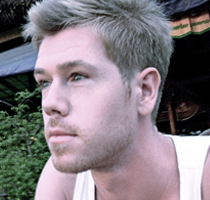Poetry Reviews
Matthew R. Loney
Dance, Monster!
Fifty Selected Poems
by Stan Rogal
London, ON: Insomniac Press, 2011
110 pp. $14.95
Reviews of Stan Rogal’s collection of fifty selected poems, Dance, Monster!, have been mixed – ranging from “misunderstood” and “under appreciated” to “intellectual redneck”. Rogal’s poetry seems to polarize his readers into verbose and defensive fans or artistic whistle-blowers. Somehow, over the course of a career that includes nine collections of poetry, three novels and three short story collections, Rogal has yet to break into the Canadian poetic vernacular. Contrast this odd stasis with what poet Ken Babstock did with his debut collection Mean and his three subsequent collections, and one should reasonably question why Rogal’s work has failed to ignite the same excitement as say, a new work from veteran Dionne Brand, or even newcomer Daniel Tysdal.
Dance, Monster!, compiled by fellow poet Paul Vermeersch, reads like a record company’s last-ditched attempt to breathe life into a singer’s recording career that failed to inflate with the original albums themselves – a “Best Of” seeking to attract a fresh audience to a prolific yet underwhelming repertoire. The purpose of a retrospective is to provide an overall view of an artist’s trajectory, to witness growth, to place the present within the context of the past. With each subsequent project, a writer ought to develop in both technical skill and insight. But what is unflinchingly obvious about Dance, Monster! is that Rogal has been writing the same poetry for twenty years and the collection – spanning 1992 to 2005 – reads like a heart monitor pinned to a cadaver – morbidly flat. Poems from Fabulous Freaks (2005) rely on the same pony tricks as those from Sweet Betsy from Pike (1992).
Compounding the disappointment is Rogal’s obvious talent that is glimpsed at several times per poem, as in “Sub Rosa Transformation: 5” – “Primal water populates with nothing, save, transitional / Creatures.” And further on in “In Search of the Emerald City V” – “Van Gogh spun gold from a brush. / Sold one painting. / Enough, simply, for a single stunt: / a shotgun message blasted / clear across the starry, starry sky.” But these precise, illuminating moments are rare bricks in poems full of mortar. The remaining bulk gestures toward some larger meaning but is constructed by way of a dumping ground or recycling bin for related words and phrases, which are so rarely assembled into insight, emotion or utility. The result is reminiscent of well-intentioned undergraduate poetry that finds value in its reluctance to let go of the clever, the academic and the abstract, to pepper verses with French or Latin, references to Asmodeus (the king of demons), St. Vitus (the patron saint of dancers) or to preface each poem with an epigraph that ends up outshining the lines that follow.
It is commendable that Rogal sets out into a poetics that defies reference to a concrete world, instead choosing to beat his own path through a subversive and irreverent linguistic forest of his own creation. But he would do well to get back to basics and reconsider Horace’s treatise that poetry is meant to delight and instruct. As for Dance, Monster!, Rogal has sadly accomplished just more “strange utterances” “among such empty yak” for which much poetry has gained its popular reputation.
Heavenly Questions
by Gjertrud Schnackenberg
New York, NY: Farrar, Straus and Giroux, 2010
64 pp. $25.50
“What strange arts can be employed
To know what passed when all was void?” – Qu Yuan
Lullabies quicken the onset of sleep. They have been utilized in every human culture since the ancient period and despite being primarily a comforting tool for children, within them lies the innate possibility for greater power – that of hypnotism. A lullaby soothes us enough to submit to the forces of nature. Once in its clutch, the lullaby, like a snake charmer, is able to manipulate one’s physiological functions, working akin to spirit possession.
Winner of the 2011 Griffin Poetry Prize, Washington native Gjertrud Schnackenberg’s potent treatise Heavenly Questions, is an album of magnetic lulling, an enchantment strengthened by its undulating iambic pentameter. The reader gets the sense that the sways of the iamb are being used as a binary spell, a heartbeat, and as an unrelenting opiate of strength for her narrator as she first confronts and then accepts the death of her beloved husband.
Schnackenberg’s inner world is so precisely illuminated by her steady and unfailingly perfect procession of images that we cannot help but succumb to her story, to make her pain ours, to share in her utter loss. Heavenly Questions is a poet’s confrontation with God. Answers are diligently parsed and then re-sought, even demanded and begged for. Schnackenberg supplicates flawlessly on behalf of our species – all humans who go searching for, as she does, “the house where no beloved person ever died.”
If she is to return from her quest with any satisfactory answer the whole functioning mathematics of Creation must be considered and then analyzed, from the “metamorphic, underearth plateaus” to the “immaterial labyrinth / Where everything that ever happened fades.” Mythology is seamlessly blended with geology, biology and cartography. Early on, her narrator presents God with a last-ditch ultimatum through her line breaks:
I turned my back on heaven once and for all,
No questions anymore. Just say he’ll live.
Bright doors exploded open, closed; O.R. –
Just say he’ll live “O.R.” what?
The reader’s eye cannot help but connect the two ends, to get caught in the swing of the door as it slows and then pauses on the cusp between open and closed. The doors to the operating room are the pivot on which her belief system – and the life of her husband – literally rests – the giant “or else…” that she proceeds to leave imagined with the dash.
Schnakenberg is the widow-poet crumbling under the weight of her loss. Her supplications are unfailingly accurate, devastating and illuminating. She requests that we perform our own entreaties to the heavens, to come with her into an acceptance of a life that includes an inevitable relationship with death and the broader truths and mythologies of our species which ultimately afford death – and our existence – its meaning.
Shifting effortlessly between the mythic realm of magic stags, “sunset painted doors” and the epic battles of the Mahabharata – the Sanskrit text from which also comes the Bhagavad Gita – her grim reality superimposes itself onto the fabric of the ancient texts, affording her journey a kind of universality reminiscent of all classic texts.
Resting alongside her husband in the hospital, she picks up the book he has fallen asleep reading – a text of Buddhist parables. She reads it:
Oh say not so, Ananda, say not so
Buddha replied, when his pupil-companion
Came to him, and sat down on one side,
“My teacher, isn’t beauty half the goal?
For doesn’t half the holy life consist
Of drawing near to beauty, step by step?”
Oh say not so, Ananda, say not so;
Not half, he answered. Say it is the whole.
We are born to worship, Schnackenberg concludes, and worship involves giving our highest effort to produce something worthy – an utter expression of our love and devotion, our joy and gratitude. The creation of beauty is our gift back to the Universe for life. Our songs, our novels, our photographs, our buildings, our parks and policies are all statements of worship and our gesture to connect with the Divine. Heavenly Questions is a celestial net that is flung into the perfect heavens to collect stanzas of diamantine stars.






No Comments so far ↓
There are no comments yet...Kick things off by filling out the form below.